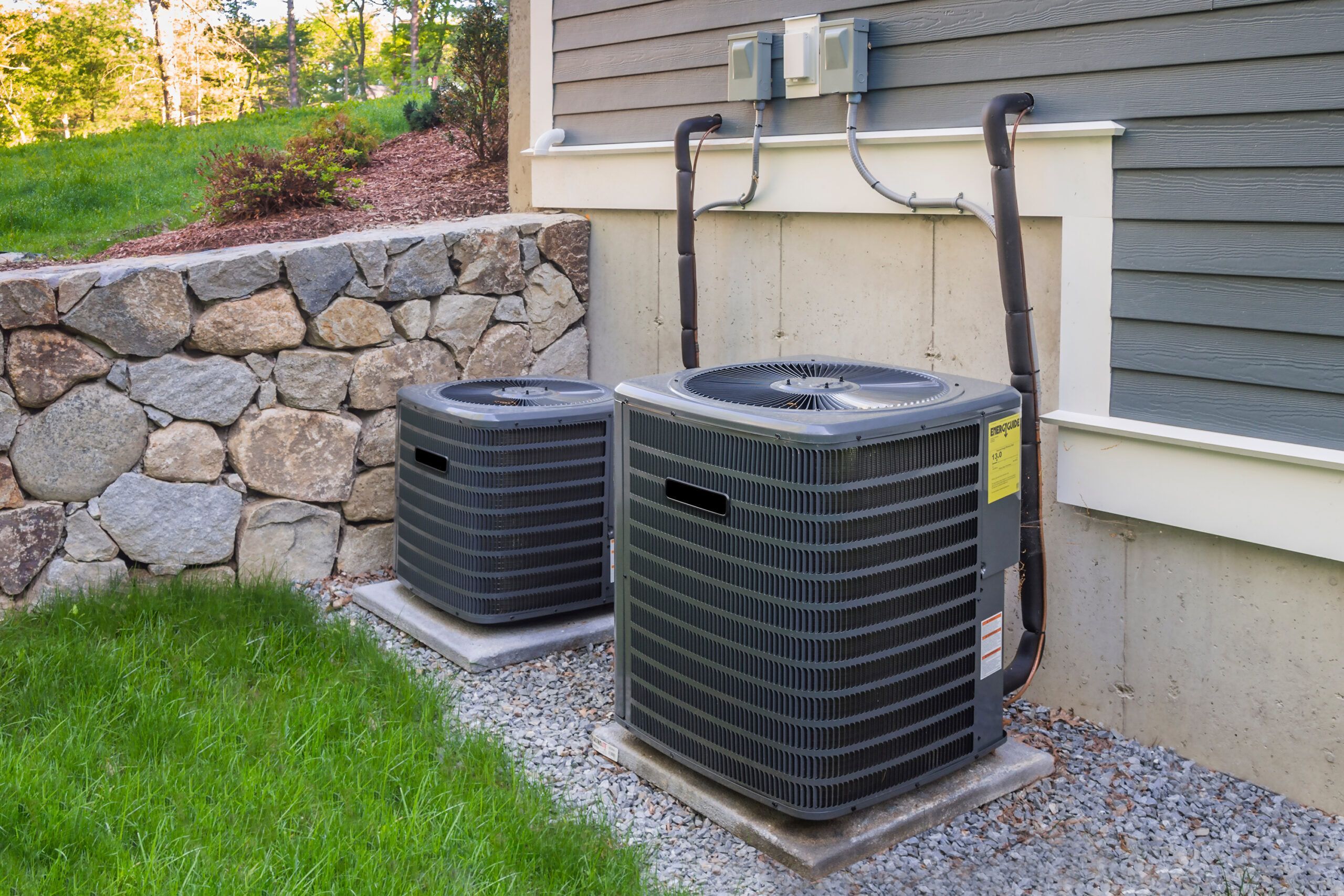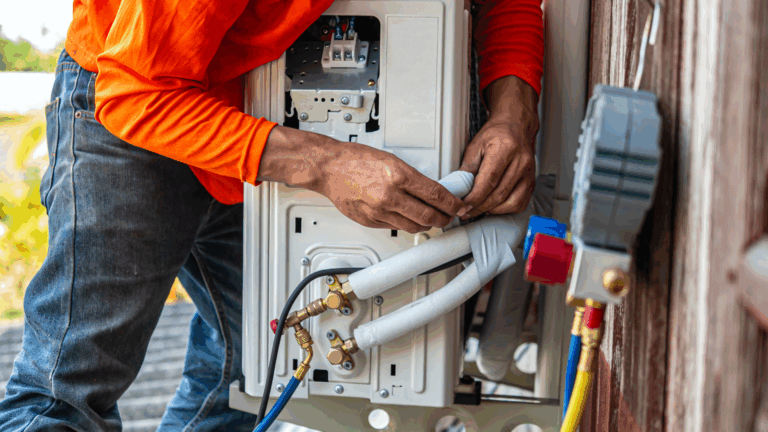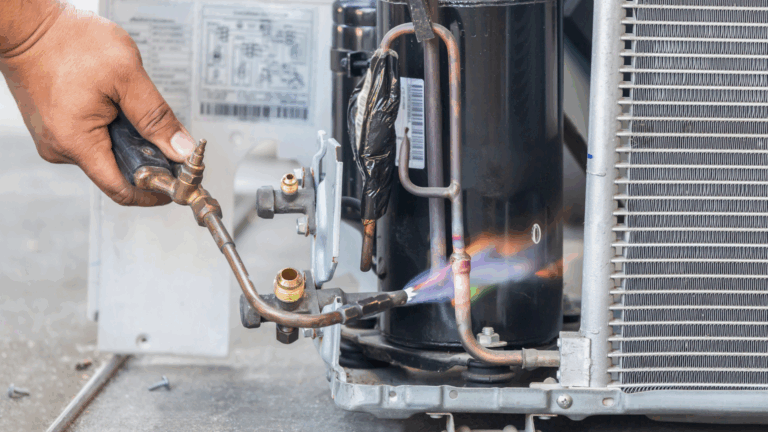Central Air or Ductless Mini-Split: What’s Better for Your Home in 2025?
Planning to build a home, remodel, or swap out an aging HVAC system? Then you’re probably asking yourself one critical question: Should I choose a central air conditioner or a ductless mini-split system?
As we navigate 2025 with rising energy costs and smarter home tech becoming the norm, making the right cooling choice can impact more than just your comfort. It can affect your monthly utility bills, indoor air quality, and long-term property value.
In this detailed guide, we’ll help you compare both systems, how they work, installation factors, cost breakdowns, efficiency ratings, aesthetics, and upkeep. Whether you need to cool a whole house or a single space, this guide will help you decide which system fits your needs best.
How Each System Operates
Central Air Conditioning: Whole-Home Cooling Through Ducts
Central AC pulls warm air from inside your home, cools it using an indoor coil, and distributes it through ductwork. Key components include:
- Outdoor condenser (compressor + fan)
- Indoor evaporator coil (absorbs heat)
- Air handler or blower
- Duct network (carries air to vents)
- Thermostat (usually centralized)
This setup is ideal if your home already has ducts from a forced-air heating system or previous AC. It ensures consistent temperatures across large spaces.
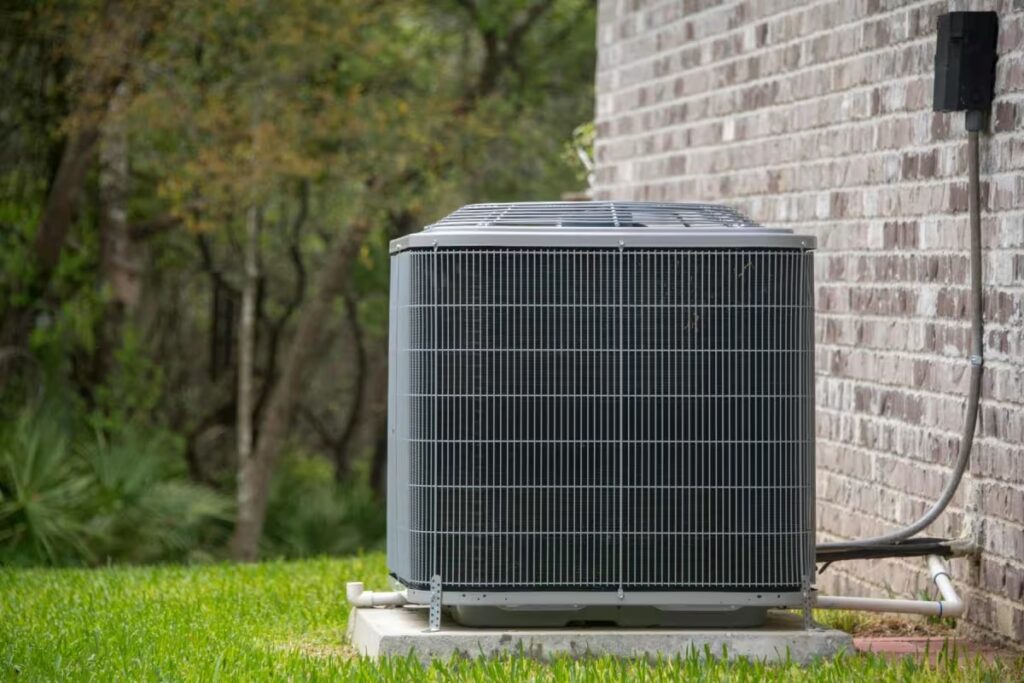
Ductless Mini-Splits: Zoned Comfort Without Ductwork
Mini-split systems skip the ducts altogether. Each consists of:
- A single outdoor unit
- One or more indoor air handlers mounted on walls or ceilings
- Refrigerant lines connecting both units through a small wall opening
Every indoor unit has its own thermostat, giving you precise control over different zones. This system is particularly useful for additions, older homes, and rooms with different cooling needs.
According to the U.S. Department of Energy, ductless systems are well-suited to homes without existing ducts, as well as basements, garages, and bonus rooms.
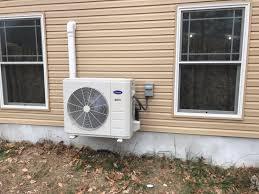
Installation: What Each System Requires
Central Air Setup Needs
To install central air, your home must have existing ductwork or room to install it. Ducts typically run through attics, crawl spaces, or walls. If ducts are already in place, installation is easier and less expensive.
But if they need to be added, expect:
- $10–$25 per linear foot for ductwork
- $3.00–$6.25 per sq. ft. for total installed cost (including the unit)
Best for:
- Larger homes (1,500+ sq. ft.)
- Open layouts needing even cooling
- Homes under construction or undergoing major renovation
Mini-Split Installation Perks
Mini-splits require no ducts, making installation fast and minimally invasive. Most jobs are done in 1–2 days with very little wall damage. Just refrigerant lines and power cables are run between indoor and outdoor units.
Great for:
- Historic or older homes
- Add-ons like sunrooms or guest suites
- Homes without existing HVAC systems
Price Comparison: What You’ll Spend in 2025
| System Type | Equipment | Installation | Total Estimate | Cost per Sq. Ft. (2,000 sq. ft.) |
| Central Air | $3,500–$7,500 | $2,500–$5,000 | $6,000–$12,500 | $3.00–$6.25 |
| Mini-Split (1–2 zones) | $2,500–$6,000 | $1,500–$4,000 | $4,000–$10,000 | $2.00–$5.00 |
| Additional Zones | +$1,000–$2,500 | +$750–$1,500 | Varies | Increases per-room cost |
Central AC is more economical for larger homes, especially when ducts are already present. Mini-splits are cost-effective for smaller areas or homes without ductwork.
Running Costs: Which System Is More Efficient?
Central Air
- Cools the whole house, regardless of occupancy
- Higher energy use due to duct leakage and insulation loss
- $0.75–$1.25 per hour
- $0.03–$0.06 per sq. ft. per hour
Ductless Mini-Split
- Cool only the rooms you need
- No duct losses + inverter tech = energy savings
- $0.25–$0.70 per hour per zone
- $0.015–$0.04 per sq. ft. per hour
Mini-splits often come out ahead for smaller homes or targeted cooling needs.
Energy Efficiency: Which Saves You More?
The 2025 standard for measuring efficiency is SEER2 (Seasonal Energy Efficiency Ratio). The higher, the better.
- Central AC:
- Minimum SEER2 rating of 14.3
- High-end models may reach SEER2 20+
- Efficiency can drop by up to 30% due to duct losses
- Mini-Split Systems:
- SEER2 ratings range from 20 to 30+
- No ducts = no energy loss
- Inverter compressors boost performance
If cutting energy costs is a major goal, mini-splits deliver superior performance.
Visual Appeal and Design
- Central Air: Only small vents are visible; the system remains hidden.
- Mini-Splits: Indoor units are visible (on walls or ceilings), which might disrupt aesthetics in more traditionally designed homes.
Some mini-split models offer recessed or concealed air handlers, but those come at a premium.
Maintenance & System Longevity
Central Air Lifespan: 12–15 years
- Regular filter changes (1–3 months)
- Yearly tune-ups
- Duct cleaning every 3–5 years
- Watch for duct leaks
Mini-Split Lifespan: 15–20 years
- Clean filters every few weeks
- Annual refrigerant inspection
- Drain line maintenance
- Minimal duct-related issues
Mini-splits generally last longer and are easier to maintain, especially for DIY-minded homeowners.
Climate Compatibility
Mini-Splits are ideal for:
- Mild to hot climates
- Homes without ducts
- Zoned usage (different needs for different rooms)
- Areas with heating needs too (many are heat pumps)
Central Air works best in:
- Larger homes
- Uniform cooling needs
- Hot, humid climates
- Homes already outfitted with ductwork
User Experience & Smart Controls
Central Air:
- Typically one thermostat for the whole home
- Zoning possible but requires extra dampers and wiring
Mini-Splits:
- Separate thermostats for each unit
- Most units come with remotes, Wi-Fi access, and smartphone control
- Compatible with smart home systems like Alexa or Google Home
For flexibility and tech-savvy homeowners, mini-splits offer more personalized control.
Final Decision: Which Should You Pick?
Go with Central Air if:
- You already have ductwork
- You want everything hidden
- You’re cooling a large or open home
- You prefer a single thermostat
Opt for Mini-Split if:
- You lack ductwork and want minimal construction
- You’re cooling one room or a smaller space
- You value energy savings and room-by-room control
- You want fast, non-invasive installation
Need Help Choosing the Right System?
Upgrading your home’s cooling system is a major decision, but you don’t have to do it alone.
Team Fort Worth AC Repair is here to help you choose the perfect HVAC setup for your home and lifestyle. Our certified experts evaluate your space, budget, and energy goals to recommend the best system, whether that’s a ductless mini-split, central AC, or a hybrid solution.
Let’s keep your home cool and efficient in 2025 and beyond.

